Table of Contents
MPPSC Forest Service Syllabus 2023: The Madhya Pradesh Public Service Commission (MPPSC) has not yet posted the MPPSC Forest Service syllabus and exam format for 2023 on its official website. It’s important for candidates to be familiar with the complete MPPSC State Forest Service Syllabus so they don’t overlook anything during their exam preparation. Knowing the MPPSC Forest Service syllabus will enable you to get ready for the exam in an organized way.
MPPSC Forest Services Syllabus 2024
Candidates are chosen through five steps: the preliminary round, the main exam, an interview, a physical measurement test, a physical standard test, and finally, a medical examination. Aspirants should also check the MPPSC Forest Service exam pattern while studying to understand the type of questions they’ll encounter in the MPPSC State Forest Service Exam. Knowing the full syllabus and exam format is the initial and essential step to begin your preparations.
| MPPSC Forest Services Syllabus 2024 Highlights | |
| Name of Organization | Madhya Pradesh Public Service Commission (MPPSC) |
| Name of Post | MPPSC Forest Service Officers |
| Category | Syllabus and Exam Pattern |
| Job Location | Madhya Pradesh |
| Official Website | https://mppsc.mp.gov.in/ |
MPPSC Forest Services Syllabus 2024 (Expected)
Since the official notification for 2023 is not out yet, we might anticipate the same syllabus as the previous year. The syllabus will be updated once the notification is available. To avoid missing any crucial topics, candidates should review the MPPSC Forest Service Syllabus from previous years. Below, you can find the detailed syllabus for the preliminary and main exams from the previous year.
MPPSC Forest Service Prelims Syllabus
The MPPSC Forest Service Prelims syllabus is divided into two papers, viz. General Studies and General Aptitude Test. The detailed MPPSC State Forest Service prelims syllabus is given below:
| Subject | Syllabus |
| Paper I – General Studies | |
| General Science and Environment |
|
| Current Events of National & International Importance |
|
| History of India and Independent India |
|
| Geography of India | (a) Geography of India: There will be questions of general knowledge relating to Physical, social, and economic geography. It will also include questions on Indian Agriculture and Natural resources. There will be questions pertaining to the demography and census of India.
(b) General Geographical awareness of the world |
| Indian Polity and Economy |
|
| Sports |
|
| Geography. History and Culture of M.P |
|
| Polity and Economy of M.P. |
|
| Information and Communication Technology |
|
| Scheduled Caste & Scheduled Tribe |
|
| Paper II – General Aptitude Test | |
| General Aptitude Test |
|
MPPSC Forest Service Mains Syllabus
Candidates can obtain a PDF copy of the MPPSC Forest Service Mains Syllabus and exam pattern by visiting the official MPPSC Commission website. The syllabus is split into two parts: General Knowledge of Madhya Pradesh, National, and International Affairs, and Forestry and General Science. Since the 2023 official notification isn’t available, we might anticipate the same Mains syllabus as the previous year, with updates when the notification arrives. You can refer to the table below for a detailed MPPSC SFS mains syllabus from the previous year:
| Subject | Syllabus |
| Section I – General Studies | |
| General knowledge about India |
|
| General Hindi |
|
| General English |
|
| History, Culture & Literature of Madhya Pradesh |
|
| Geography of the Madhya Pradesh |
|
| 3. Politics and Economy of M.P. |
|
| 4. Current events of International, National, and M.P. |
|
| General Mathematics |
|
| 5. Information and Communication Technology |
|
| Section B: Forestry and General Science | |
| Unit I – Forest and Forestry | Definitions, terminology, history and background of forest, the objective of forestry, the role of forest(productive, protective and ameliorative), the forest cover of India and M.P., the influence of forest on the environment, forest types of India and M.P., reasons for the declining forest, classification of the forest, Trees Outside Forest (TOF), state wise forest distribution and growing stock, silvics and silviculture, forest regeneration, some commercially important trees (botanical name and family) examples teak, shisham, sal, babul, harra, Behera, amla, tendu, Palash, arjun, khair, mahua. |
| Unit II – Forest Utilization | Definitions, terminology, wood product, wood seasoning, wood preservation, plywood, particle-wood, pulp and paper, sawmilling, logging, forest measurements (tree height, volume, biomass), and non-wood forest products. fibers, flosses, grasses, tannin, gums, dye, resin, oleoresin, essential oils, tree-borne oil seeds, and medicinal plants. |
| Unit III – Forest Policy and Legislation | Definitions, terminology, National Forest Policies (1894, 1952, 1988). Forest Law, Indian Forest Act (1927, 2002, 2006), comparison of forest Policies, Wild Life Protection Act (1972) and its amendments.
Forest Conservation Act (1980) and amendments, Environment Protection Act 1986. Biodiversity Act 2002, Forest Right Act 2006 for tribals, Indian Forest Act 2019 (Amendment). Bamboo freed from forest produce, joint forest management, social forestry, agroforestry, farm forestry, Agroforestry Policy 2014, M.P. Joakvaniki Act, 2001. |
| Unit IV – Forest Protection | Definitions, terminology, Classification of injurious agencies- man, animals, insects, plants, environmental factors, forest fires and control measures, grazing and grazing management. afforestation, soil conservation, and watershed management.
Global warming, role of forest in climate mitigation, carbon pool. role of forest in soil and water conservation, National parks, Census, ecosystem services, forest management, reserve forest, and Biosphere reserves. |
| Unit V – Tribes of Madhya Pradesh | Major Tribes of M.P. and its subcastes -Bhil, Gond, Baiga etc. Special backward tribes of M.P.- Baiga, Bhariya, Sahariya. General introduction, regions and their features of languages and dialects of tribes of M.P., Major institutions and museums for tribes in M.P., Festivals, Religious beliefs, Culture and traditions of tribes of M.P., Welfare Schemes of tribes, Role of tribes in forest protection. |
| Unit VI – Chemistry | Rate of a chemical reaction and chemical equilibrium – Preliminary knowledge of rate of chemical reaction. Fast and slow chemical reactions. Reversible and irreversible chemical reactions. Reversible reaction and dynamic nature of equilibrium.
Acids and bases. pH scale [simple numerical questions. Exothermic and endothermic reactions. Some important chemical compounds – properties and uses. Method of production manufacture [water, washing soda, baking soda bleaching powder and plaster of Paris.) preparation of building material cement glass and steel. Metals – Position of metals in the periodic table and general properties. Metal, mineral ore. Difference between mineral and ore. Metallurgy-concentration, roasting, smelting, refining of ores. Metallurgy of copper and Iron, corrosion of metals. Alloys. Nonmetals – Position of nonmetals in the periodic table. Preparation properties and uses of Hydrogen oxygen and nitrogen. Some important organic compounds – laboratory method of preparing alcohol and acetic acid, properties and uses of some general artificial polymers, polyethylene, polyvinyl chloride. Teflon soap and detergents. |
| Unit VII – Physics | Source of Energy – Conventional and new sources of Energy, source of solar energy, causes of origin of energy in the Sun, solar heating devices, solar cooker solar cells, wind energy, biogas, fossil fuels, ideal fuel properties of idea! fuel.
Nuclear energy, nuclear Fission, Fusion, chain reaction, nuclear reactor, use and harms of nuclear energy. General information about CREDA. Light – nature of light reflection of light, laws of reflection, reflection from the plane and curved surface, image formation by plane convex and concave mirror, relation between focal length and radius of curvature, determination of focal length of a concave mirror by single pin method. [Relation between u-v-f [numerical examples. Refraction of light – laws of refraction, refraction by glass slab, critical angle, total internal reflection, use of total internal reflection in daily life, lens [converging and diverging lens. Definition focal length optical centre image formation by lens Human eye. its defects and remedies. Comparison between the photographic camera and the human eye. Simple telescope and astronomical telescope. Construction working, uses, ray diagram [no formula derivation). Electricity and its effects – electric intensity, potential, potential difference, electric current Ohm’s law. Resistance specific resistance, influencing factors, a combination of resistance and related numerical examples thermal effect of current its use, calculation of power iT’S ranT -P-i-ents. Che.ioa, e.eCs or electric cont construction. ‘ f Magnetic M effect ° ‘ of current – Magnetic effect of current. Oersted experiment, electromagnetic accumulator cell induction’ electric motor, working principle and use of a generator, general studies of alternating current and direct current electric discharge,n gases, discharge tube, cathode rays. X-rays and their properties. Magnetism – Magnet and its types artificial magnets, methods of preparing magnets, molecular theory of magnetism, demagnetization, magnetic keepers, magnetic lines offer and their properties. Plotting the lines offeree Terrestrial magnetism, magnetic storm, magnetic meridian geographical meridian, relation between VH1 and |
| Unit VIII – Biology | Animal nutrition – Types of nutrition. Autotrophic Nutrition, Heterotrophic Nutrition. Holozoic, Parasitic Saprophytic ‘symbiotic. Insectivorous, is an important term of the nutrition process. Digestion in unicellular ceil animals [amoeba] and multicellular animal grasshoppers.
Human digestive system and digestive process. Photosynthesis, the main steps of the process, light reaction and dark reaction. Factors influencing Photosynthesis. Experiments related to photosynthesis. Respiration – Definition, respiratory organs of animals breathing and respiration. Types of respiration. Aerobic and anaerobic respiration, respiratory system of human beings and mechanism of respiration [general information], respiratory quotient [RQ] of carbohydrate, fat and protein. Transport of minerals and water in plants and animals [In the context of a human being] Composition and function of blood, structure, and working of heart, structure, and function of blood vessels [preliminary knowledge] coagulation of blood, blood group, blood transfusion, blood bank, a function of lymph system, diseases related to heart. Excretion – excretion in plants and excretory products. Excretion in animal and excretory organs Excretion system of man and excretion process [general information] artificial kidney dialysis. Osmoregulation. Diseases related to kidney Control and coordination – coordination in plants and animal Phytohormones. Nervous system of human beings. Structure and function of human Brain and spinal cord, reflex action, endocrine glands hormone, and their function. Reproduction and growth – a type of reproduction Asexual reproduction fission, budding, regeneration, vegetative reproduction, layering, cutting, and grafting. Parthenogenesis, sexual reproduction in plants, structure of flower and reproduction process [general information] pollination fertilization. Human reproductive system and reproduction process. Heredity and evolution – heredity and variation, the basis of heredity chromosome and DNA [preliminary information] gene sex determination preliminary knowledge of organic evolution [Oparin’s theory only] |
| Unit IX – Environment | Biodiversity and its conservation – General introduction – definition, species and genetic diversity. Blo-geographic classification of India. Importance of Biodiversity – Constructive and Destructive application. Importance of social, moral, and alternative vision. Global.
National and Local level Blo-diversity. India is a wide diverse nation with hotspots of Biodiversity, and threats to biodiversity. Residential damage, and damage to wildlife, humans, and wild animals struggle. India’s threatened (endangered) and local species. Conservation of biodiversity. Topological and Non topological conservation. Environmental pollution – Reason effect and conservation – Air pollution, water pollution, sea pollution, soil pollution, sound/noise pollution, thermal pollution, nuclear pollution. Solid waste management- Urban and Industrial solid waste management: reason, effect, and control. Human role in pollution control. Disaster Management. Floods, Earthquake. Cyclones and Landslides. Human Population and Environment, Population growth. Variation in the population in various countries. Population Explosion and Family Welfare Programme. Environment and Human Health |
| Unit X – Elementary Mathematics and General Mental Ability |
|
MPPSC Forest Service Exam Pattern 2024 (Expected)
Here is the MPPSC Forest Service Exam Pattern for candidates to remember. It’s essential to align your preparation with the Commission’s format. While the official 2024 notification is not available, we can anticipate that the Mains exam pattern will resemble the one used in the previous exam. The MPPSC State Forest Service Exam Pattern can be understood through these particulars:
MPPSC Forest Service Prelims Exam Pattern
The first part of the MPPSC Forest Service Exam is the Prelims Exam, which comprises two sections: Paper 1 and Paper 2. These prelim exams for MPPSC State Forest Service are conducted using OMR sheets. It’s important to note that there are no deductions for incorrect answers in the preliminary round, and each paper is worth 200 marks.
| Paper | Subject | Total Marks | Duration |
| Paper-1 | General Studies | 200 | 2 hours |
| Paper-2 | General Aptitude Test | 200 | 2 hours |
Candidates receive marks only for Paper 1, which is General Studies.
- To move on to the main examination, general category candidates must score a minimum of 40%, while SC/ST category candidates from MP must secure at least 30% in Paper 2.
MPPSC Forest Service Mains Exam Pattern:
Candidates who get scores above the set minimum marks and the cut-off are eligible for the MPPSC Forest Service Examination. The MPPSC Forest Service mains exams are conducted online and have the following details:
- The exam is divided into two parts, A and B.
- Each part carries 200 marks.
- Every question is worth 2 marks.
- No marks are deducted for wrong answers (no negative marking).
- All candidates must secure at least 40% marks (General Category) or 30% marks (SC/ST Candidates from MP Domicile) to pass.
| Paper | Subject | Question | Total Marks |
| Part A | General Knowledge of Madhya Pradesh, National and International Level | 100 | 200 |
| Part B | Forestry and General Science | 100 | 200 |
Interview
The MPPSC Forest Service interview round carries a weight of 50 marks. Only candidates who pass both the prelims and mains exams will proceed to this interview stage. To succeed in this round, candidates should have a solid grasp of their subjects and general knowledge. The candidate’s overall selection is determined by their merit.
Physical Measurement Test
To be considered for the recruitment process, candidates must meet the requirements of the Physical Standard Test. The criteria vary for male and female candidates. For further details, please refer to the table below.
| Physical Measurement Test | ||
| Parameters | Male | Female |
| Height (UR, OBC, SC candidate) | 163 cm | 150 cm |
| Height (ST candidates) | 152 cm | 145 cm |
| Chest Measurement | 79 cm (minimum expansion 5 cm) | 74 cm (minimum expansion 5 cm) |
| Physical Efficiency Test (4 hours walk) | 25 km | ACF: 14km
FR & PM: 16 km |
Preparation Strategy for MPPSC Forest Service Exam
Securing a position in the MPPS Commission’s Forest Service role is highly competitive. To qualify, candidates should initiate their preparations well in advance and cover essential topics found in the MPPSC State Forest Service Syllabus. We’ve put together a strategic plan to help you excel in the exam:
- Understand the importance of each subject in the syllabus and prioritize your preparation accordingly.
- Take mock tests to assess your performance and adjust your preparation accordingly.
- Thoroughly study the entire syllabus to ensure you cover all vital topics.
- Practice with as many previous question papers as you can find.
- Be aware of the minimum qualifying marks required to pass the exam.
- Refer to recommended books by experts at Testbook for effective study material.
- Review past years’ cutoff trends for the MPPSC Forest Service Exam.
- For the General English and General Hindi paper, work on comprehension, vocabulary, and grammar to enhance your language skills.
- Start reading NCERT books from classes 6 to 12, as they provide a strong foundation and cover important subjects.
- Stay informed about environmental topics, climate change, and global environmental issues. Consider joining environmental groups to deepen your knowledge in this area.

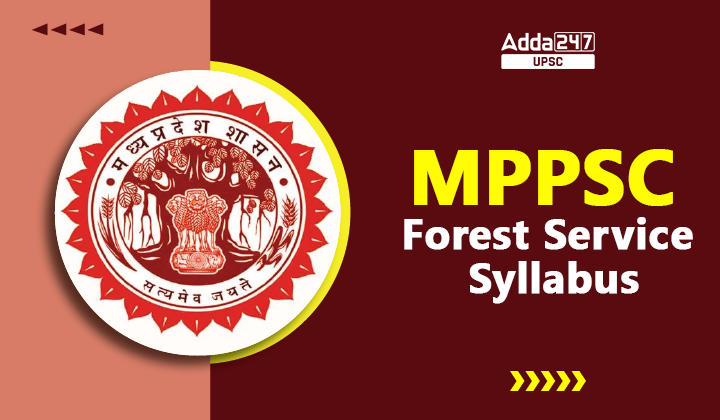

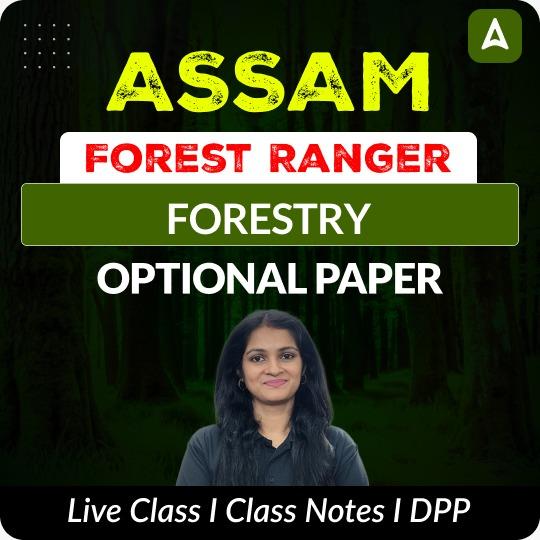
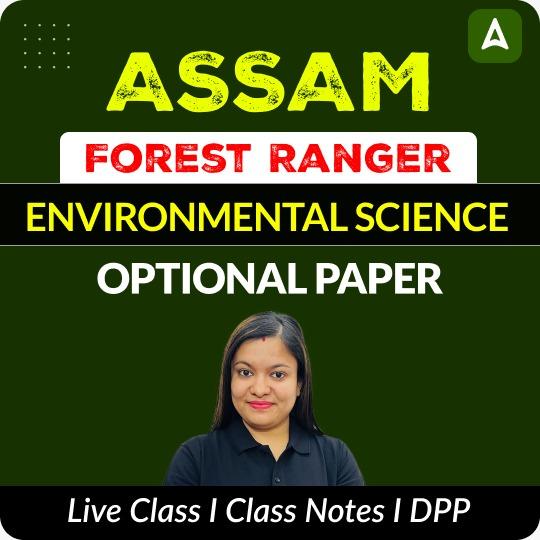
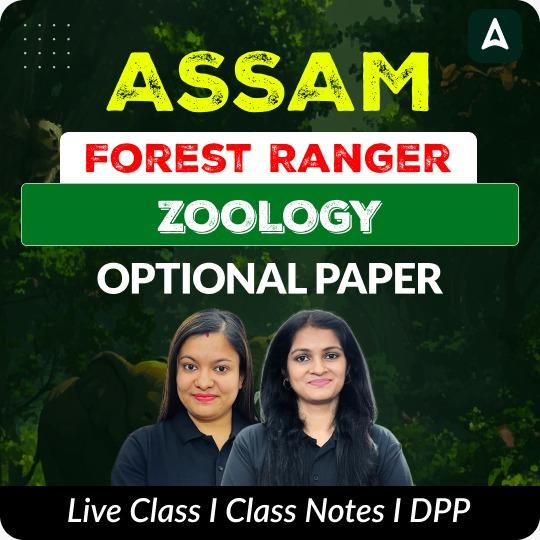

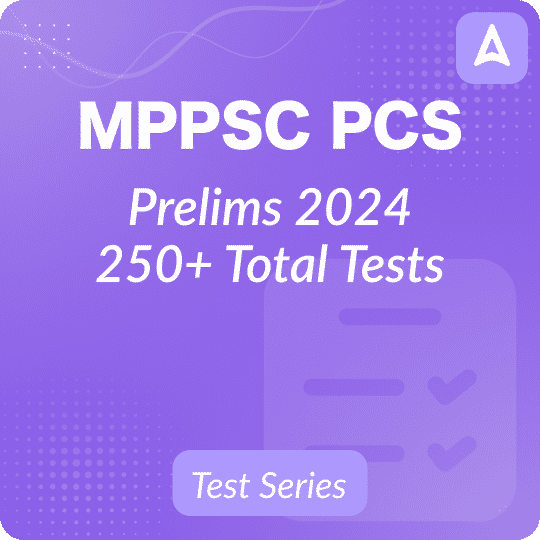
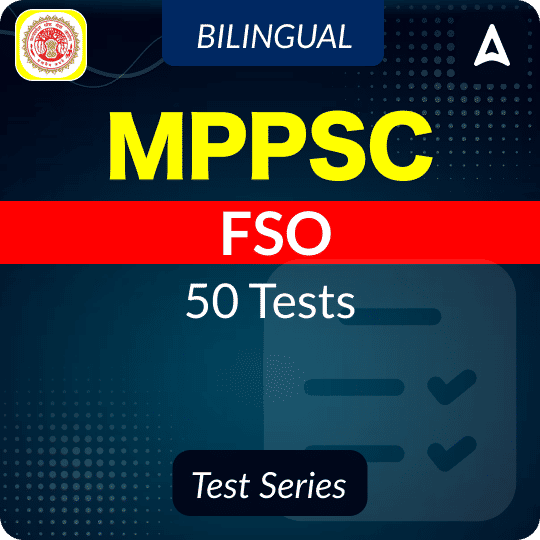
 UPPSC RO ARO Syllabus 2025, Check Prelim...
UPPSC RO ARO Syllabus 2025, Check Prelim...
 APSC Syllabus 2025, Download Prelims And...
APSC Syllabus 2025, Download Prelims And...
 Punjab PCS Syllabus 2025, New Prelims an...
Punjab PCS Syllabus 2025, New Prelims an...
